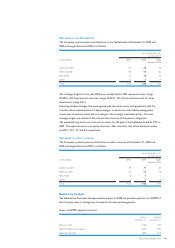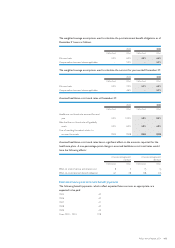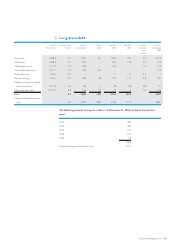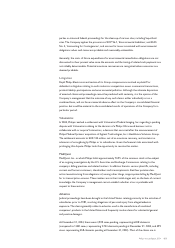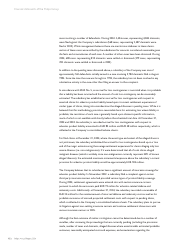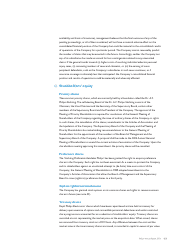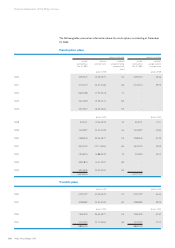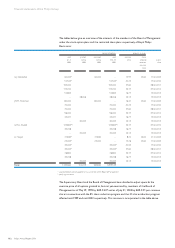Philips 2004 Annual Report Download - page 153
Download and view the complete annual report
Please find page 153 of the 2004 Philips annual report below. You can navigate through the pages in the report by either clicking on the pages listed below, or by using the keyword search tool below to find specific information within the annual report.cases involving a number of defendants. During 2004, 2,436 cases, representing 4,085 claimants,
were filed against the Company’s subsidiaries (568 cases, representing 2,587 claimants were
filed in 2003). While management believes there are meritorious defenses to these claims,
certain of these cases were settled by the subsidiaries for amounts considered reasonable given
the facts and circumstances of each case. A number of other cases have been dismissed. During
2004, 608 cases, representing 810 claimants, were settled or dismissed (379 cases, representing
392 claimants, were settled or dismissed in 2003).
In addition to the pending cases discussed above, a subsidiary of the Company was one of
approximately 160 defendants initially named in a case involving 3,784 claimants filed in August
1995. Since the time the case was brought in 1995, the subsidiary has not been involved in any
substantive activity in the case other than filing an answer to the complaint.
In accordance with SFAS No. 5, an accrual for loss contingencies is recorded when it is probable
that a liability has been incurred and the amount of such loss contingency can be reasonably
estimated. The subsidiary has established an accrual for loss contingencies with respect to
asserted claims for asbestos product liability based upon its recent settlement experience of
similar types of claims, taking into consideration the alleged illnesses in pending cases. While it is
believed that this methodology provides a reasonable basis for estimating loss where liability is
probable, the resolution of each case is generally based upon claimant-specific information,
much of which is not available until shortly before the scheduled trial date. At December 31,
2004 and 2003, the subsidiary’s recorded accrual for loss contingencies with respect to
asbestos product liability amounted to EUR 83 million and EUR 58 million respectively, which is
reflected in the Company’s consolidated balance sheets.
For filed claims at December 31, 2004, where the exact type and extent of the alleged illness is
not yet known, the subsidiary established the accrual for loss contingencies based upon a ‘low
end of the range’ estimate using the average settlement experience for claims alleging only less
severe illnesses (i.e. non-malignancies). If it were determined that all of such claims alleged
malignant diseases (which is unlikely since non-malignancies currently represent 58% of known
alleged illnesses), the estimated maximum incremental exposure above the subsidiary’s current
provision for asbestos product liability would be approximately EUR 185 million.
The Company believes that its subsidiaries have a significant amount of insurance coverage for
asbestos product liability. In November 2002, a subsidiary filed a complaint against certain
third-party insurance carriers who had provided various types of product liability coverage.
During 2004, settlement agreements were entered into with certain insurance carriers,
pursuant to which those insurers paid EUR 19 million for asbestos-related defense and
indemnity costs. Additionally, at December 31, 2004, the subsidiary recorded a receivable of
EUR 24 million for the reimbursement of incurred defense and indemnity costs as well as for
probable recoveries of accrued projected settlement costs with respect to pending claims,
which is reflected in the Company’s consolidated balance sheets. The subsidiary plans to pursue
its litigation against non-settling insurance carriers and continue settlement discussions with
various insurance carriers in 2005.
Although the final outcome of matters in litigation cannot be determined due to a number of
variables, after reviewing the proceedings that are currently pending (including the provisions
made, number of cases and claimants, alleged illnesses where ascertainable, estimated probable
outcomes, reasonably anticipated costs and expenses, and uncertainties regarding the
152 Philips Annual Report 2004
Financial statements of the Philips Group



